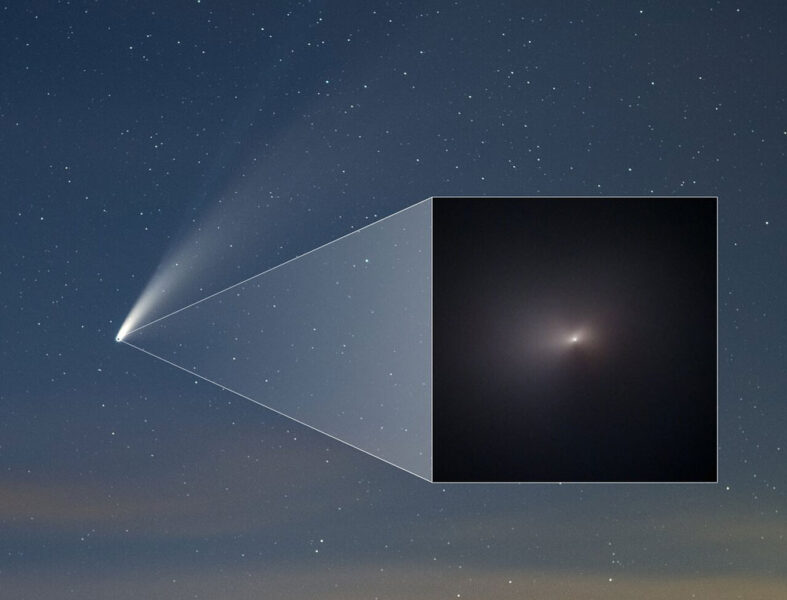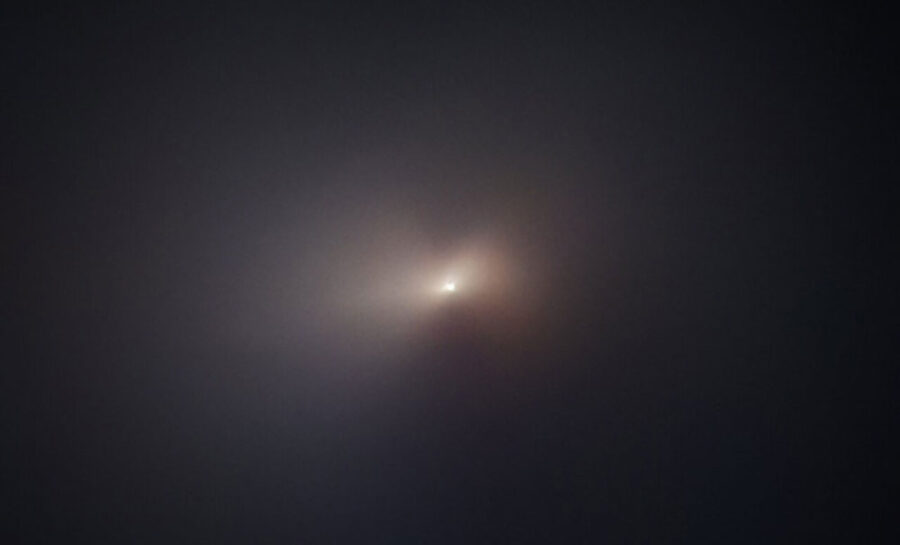The Hubble Space Telescope imaged the famous summer comet on August 8th.
On August 8th, the Hubble Space Telescope imaged the famous Comet NEOWISE (C/2020 F3) that graced our skies earlier this summer. The result is the closest image yet of the comet, which is now on its way out of the inner solar system. It won't return for another 7,000 years.

NASA / ESA / Q. Zhang (Caltech) / A. Pagan (STScI) / Z. Levay
Hubble imaged the comet's coma, the nebulous envelope of dust and gas that surround the comet's nucleus, its rock-and-ice core. The coma measures 18,000 km (11,000 miles) across.
Researchers will further investigate the Hubble images to determine the nature of the dust that surrounds Comet NEOWISE, in part to see how heat from the comet's passage near the Sun changed the properties of its dust.
While Hubble can't see the comet's nucleus directly, estimates suggest it spans only 4.8 kilometers.

NASA / ESA / Q. Zhang (Caltech) / A. Pagan (STScI)
If you look closely at the Hubble image, you'll notice two dark cones. These come from a pair of dust-and-gas jets shooting out from the nucleus in opposite directions. Jets form when, ice on the comet sublimates near the Sun, converting straight from solid into gas form. The rotation of the nucleus gives the jets a broader fan-like appearance farther out in the coma.
These structures are slightly more obvious in this short time sequence of Hubble images:
NEOWISE is the brightest comet that Hubble has been able to image, in part because other promising bright comets, such as last spring's Comet ATLAS, couldn't take the heat near the Sun. (Hubble did catch ATLAS as it fragmented, though.) Comet NEOWISE is the brightest comet in the Northern Hemisphere since Comet Hale-Bopp in 1997.
Of course, Hubble was far from the only telescope pointed at Comet NEOWISE as it flew by Earth. Be sure to check out our online photo gallery for dozens of stunning amateur images of the comet.
 0
0









Comments
You must be logged in to post a comment.